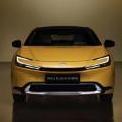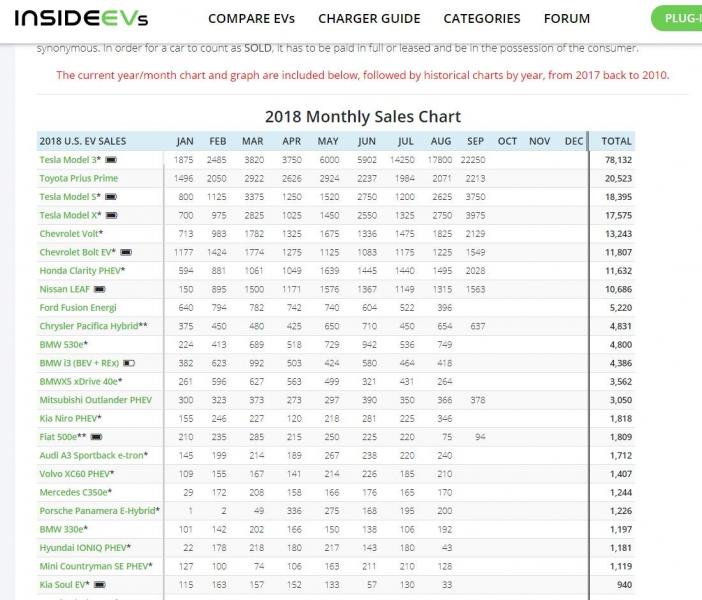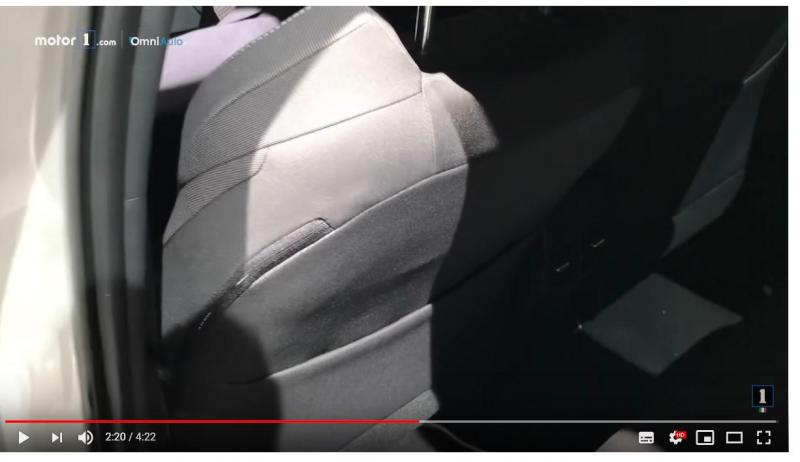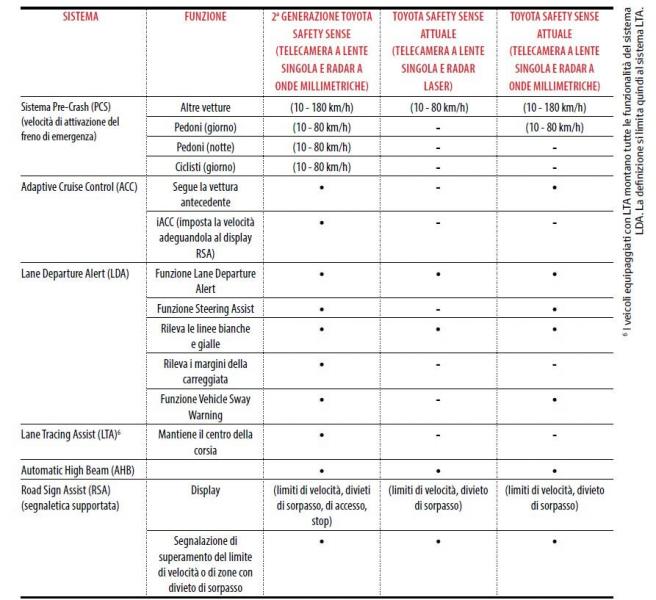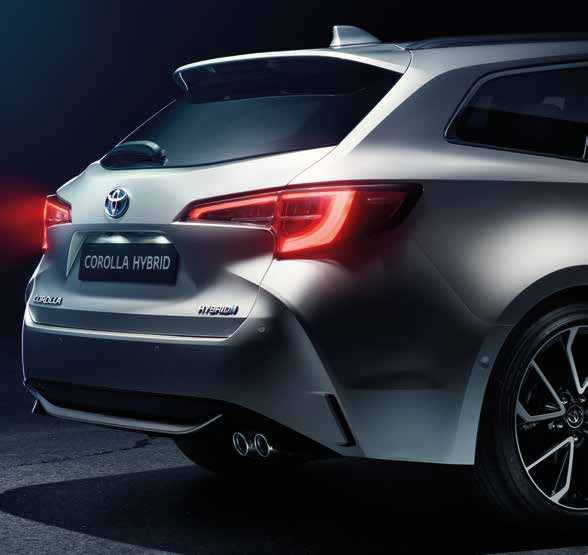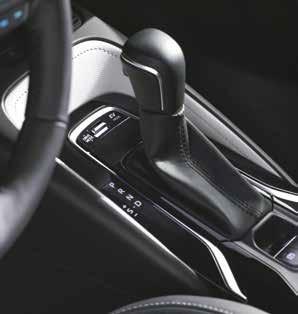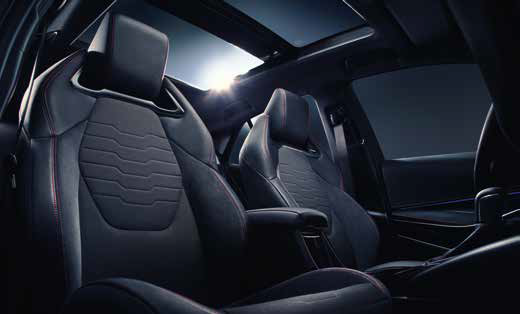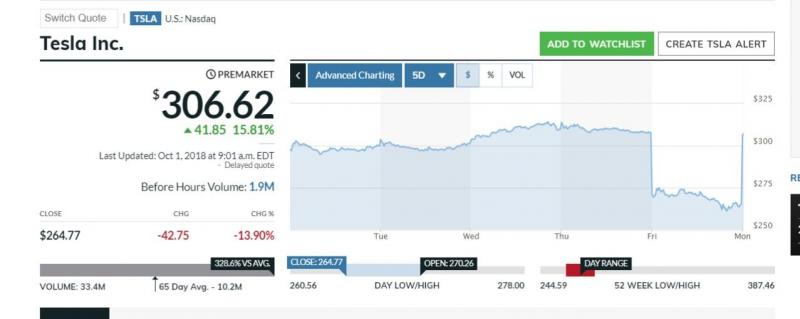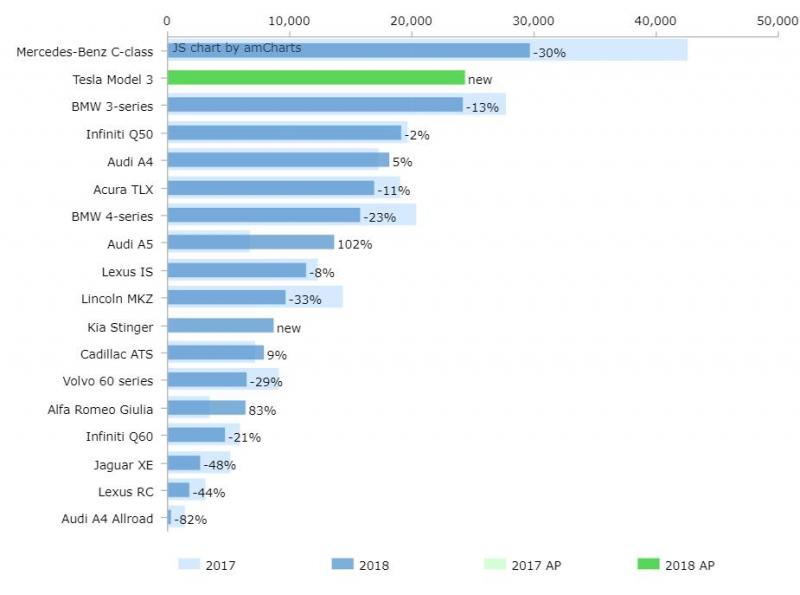-
Numero contenuti pubblicati
6617 -
Iscritto il
-
Giorni Massima Popolarità
9
Tipo di contenuto
Forum
Galleria
Calendario
Download
Articoli del sito
Store
Blog
Tutti i contenuti di Maxwell61
-
Ecco un calcolo semplificato nelle ipotesi: - fare 15.000 km/anno - Far durare i pneumatici 45.000 km/3 anni - Mantenersi nella media di consumo indicata (no troppa autostrada) - Usare le catene piuttosto che gli invernali, per la misura da 16" - Benzina = 1,690 Eur/lt. Per esigenze diverse, fare ricalcolo. Visto che il dichiarato di Prius 2016 WLTP 15" è identico al dichiarato WLTP di Corolla 16", 3,4 lt/100km, prendiamo la media reale di Prius da Spritmonitor = 4,41 lt/100 km Con i 16" Corolla consumo medio 4,41 = 1118 Eur/anno Con i 18" Corolla consumo medio 5,17 = 1310 Eur/anno ----------------------------------------------------------------------- Da Gommadiretto selezioniamo i doppia A (per fortuna per i 18 ci sono e la differenza non è tanta) Continental AA 205/55/16 - 78,40Eur x 4 = 314 / 3anni = 105 Eur/anno Pirelli AA 225/40/18 NON CAT. - 104.4Eur x 4 = 418 / 3anni = 139 Eur/anno Diff benzina = 192 Eur/anno Diff pneumatici = 34 Eur/anno Cambio + stoccaggio invernali, media = 65 Eur/anno Totale = 291 Eur/anno, nelle ipotesi fatte Quindi per avere gli scomodi e rigidi 18" con i cerchi da graffiare contro i marciapiedi e obbligatoriamente comprare degli invernali che, non essendoci in doppia A faranno consumare di più, cosa qui non tenuta in conto, dobbiamo spendere più dell'equivalente di un tagliando all'anno. Complimenti. Se poi, come me, non sopportate nemmeno l'effetto "ruote dei vagoni ferroviari" dei cerchi di grande diametro, il fegato è servito. Che poi, un'auto da comfort e guida pacata, i ruotoni da sportiva sono pure ridicoli.... Corolla con i 16"
- 648 risposte
-
- 1
-

-
- sondaggio
- corolla 2019
- (e 8 altri in più)
-
Non ho presente se c'è qualche eccezione, ma non credo ci sia EV o PHEV che non accetti la Schuko da 10A, non dovrebbero esserci problemi. Perfino la Tesla ci attacchi con l'adattatore alla Schuko :
-
@Programma101 , non mettere le mani sul fuoco sulla qualità e competenza dei press-agent e comunque anche fosse non cambia proprio niente, se non ricordo male, sono 30 kg in meno per l'equivalente al Litio. Quello che invece è da capire è l'inspiegabile drammatica riduzione del volume bagagliaio della HB 2.0 rispetto alla HB 1.8 , da 360 a 313 lt. Credo sia totalmente impossibile che sia dovuto alla batteria, visto che la NI-Mh entra perfettamente nelle nostre sotto il sedile.
- 648 risposte
-
- sondaggio
- corolla 2019
- (e 8 altri in più)
-
Per garantirti un futuro tranquillo per i blocchi e con quel tipo di uso, potresti tranquillamente considerare una elettrica, ma ti consiglierei senz'altro un usato. I maltrattamenti di una ICE non sono riscontrabili in una EV, andrei tranquillo. Il punto è: hai un punto di corrente accessibile a casa? Guarda che basta un cavo che scende dal balcone con la Schuko femmina in cima Sulle colonnine non ci conterei, rischi di non poter caricare perchè sono poche, di solito, e ci si parcheggiano i buontemponi coi SUV o spesso vanno in manutenzione. Per la scelta dell'auto in realtà non farei nomi ma mi attaccherei a Autoscout24 USATO: da prendere è il miglior affare, ma con batterie di proprietà non a noleggio!! Le Leaf sono affette da un pessimo thermal management ad aria e hanno un decadimento della batteria così elevato che abbiamo corso il pericolo che per colpa loro le EV si facessero la reputazione di morire (ovvero eccessiva riduzione di capacità) in qualche anno. A meno di superaffari guarderei anche altro.
-
@trecca sta tranquillo, non è possibile che lo abbiano eliminato il powerometro, la cartella stampa lo riporta come presente anche nell'HUD, e se hai visto il contagiri è possibilissimo che fosse come in alcune ibride che in modalità sport compare il contagiri, dovrebbe pure essere banale essendo la strumentazione un pannellone digitale in 3D. Detto questo, sempre dalla ambigua cartella, la modalità cambio sequenziale sembra citata per il 2.0, non specifica se sarà presente anche sul 1,8. Data la pessima abitudine Toyota di fare strane economie sulle versioni non top, anche di barbonate, non mi meraviglierei. Ma leggo della BMW serie3 che forse c'è chi sta peggio con gli optional a ricatto....
- 648 risposte
-
- sondaggio
- corolla 2019
- (e 8 altri in più)
-
Bravissimi, Ok, appena ho un pò di tempo faccio il conto di cosa implica per i costi annui avere i 16" piuttosto che i 18".... c'è da ridere... Lo avevo letto, proprio il fatto che non c'era miglior occasione per annunciarlo di un'auto nuova non ancora in vendita e con cartella stampa, mi rende pessimista sui tempi e non mi fa pensare che ci sarà su Corolla al debutto. Hanno messo in cartella una serie di scemate come l' E-call per il reparto multimedia, vuoi che non sapessero quanto il pubblico aspetta Android Auto, specie i proprietari Toyota che sanno quanto fa schifo il reparto multimedia Toy? E non c'è neanche scritto che avrà CarPlay a essere sinceri.
- 648 risposte
-
- sondaggio
- corolla 2019
- (e 8 altri in più)
-
Il Naughty boy ce l'ha fatta, trimestre record ? e per la prima volta, credo, dà i dati analitici di consegne e produzione, per modello. https://electrek.co/2018/10/02/tesla-q3-production-deliveries/ https://insideevs.com/tesla-model-3-sales-record-september/ PALO ALTO, Calif., Oct. 02, 2018 (GLOBE NEWSWIRE) — In Q3, we produced 80,142 vehicles, 50% more than our prior all-time high in Q2, including: 53,239 Model 3 vehicles, which was in line with our guidance and almost double the volume of Q2. During Q3, we transitioned Model 3 production from entirely rear wheel drive at the beginning of the quarter to almost entirely dual motor during the last few weeks of the quarter. This added significant complexity, but we successfully executed this transition and ultimately produced more dual motor than rear wheel drive cars in Q3. In the last week of the quarter, we produced over 5,300 Model 3 vehicles, almost all of which were dual motor, meaning that we achieved a production rate of more than 10,000 drive units per week. 26,903 Model S and X vehicles, which was slightly higher than Q2 and in line with our full-year guidance. Q3 deliveries totaled 83,500 vehicles: 55,840 Model 3, 14,470 Model S, and 13,190 Model X. To put this in perspective, in just Q3, we delivered more than 80% of the vehicles that we delivered in all of 2017, and we delivered about twice as many Model 3s as we did in all previous quarters combined. Our Q3 Model 3 deliveries were limited to higher-priced variants, cash/loan transactions, and North American customers only. There remain significant opportunities to grow the addressable market for Model 3 by introducing leasing, standard battery and other lower-priced variants of the car, and by starting international deliveries. Vendite solo USA:
- 2837 risposte
-
- auto elettrica
- ev
- (e 4 altri in più)
-
Buone notizie per chi è già pratico dell'hybrid toyota. Al contrario dell'assurda decisione di NON mettere sul CHR gli active grill shutter, qui sembrano esserci, anche se dalla cartella stampa non si capisce se siano riservati al 2.0 Per migliorare ulteriormente l’efficienza è stata adottata nel paraurti anteriore una paratia mobile che controlla il flusso dell’aria destinato al vano motore. La chiusura della superficie aiuta non soltanto a ridurre la resistenza al vento, ma consente anche di raggiungere la temperatura ottimale in tempi ridotti in caso di avviamento con le temperature più rigide. Per chi non lo sa, come su Prius e CHR: la velocità massima raggiungibile in modalità elettrica è stata elevata fino a 115 km/h, E finalmente, come su Yaris: mentre il sistema di controllo è stato modificato per impedire l’avvio del motore senza che il pedale dell’acceleratore venga pigiato, ora anche prima dell’inizio del warm-up. Insieme, tutte queste misure hanno incrementato ulteriormente il rendimento del sistema. Questo forse era già presente sul powertrain Prius 2016: Ad abbassare ulteriormente il livello di emissioni, il convertitore catalitico del sistema di scarico è stato posizionato accanto al motore, mentre il controllo del warm-up che segue l’avviamento del motore è stato ottimizzato per anticipare e migliorare la depurazione dello scarico.
- 648 risposte
-
- 3
-

-

-
- sondaggio
- corolla 2019
- (e 8 altri in più)
-
C'è un video ufficiale Toyota su youtube (che fa pena, manco a perdere il tempo) che dice che bisogna aspettare ancora un poco per la versione SEDAN!
- 648 risposte
-
- sondaggio
- corolla 2019
- (e 8 altri in più)
-
Da Parigi, BOCCHETTE POSTERIORI , va bene? ? preso da Video live Aggiungo: portellone elettrico con apertura a piede.
- 648 risposte
-
- 2
-

-
- sondaggio
- corolla 2019
- (e 8 altri in più)
-
SW tutta la vita. La Hatch la vedo male per il bagagliaio, avendo l'attuale. Notare che la 2.0 HB, per ragioni non chiare, ha una forte riduzione del già non grande bagagliaio. La nuova generazione di assistenza alla guida, ottima sopratutto l'automazione del mantenimento corsia:
- 648 risposte
-
- 3
-

-

-
- sondaggio
- corolla 2019
- (e 8 altri in più)
-
- 648 risposte
-
- 2
-

-

-
- sondaggio
- corolla 2019
- (e 8 altri in più)
-
Aggiungo: fari a LED di serie dalla base, poi BI-Led e Multi-Led salendo. Ottimo l' HUD da 10" e lo schermo 3D da 7" sul quadro e il multimedia da 8". Ma ancora non si parla di Android Auto, peste li colga. Non mi è chiaro se il powertrain rispetto a Prius 2016 e CHR ha subito ritocchi e miglioramenti. In ogni caso mi dicono che CHR e Prius non sono molto diversi per il frullinamento: bisogna quindi capire se quelle dichiarazioni di "Linearità" hanno dentro qualcosa di nuovo. Il Sequeziale Shifmatic 6 rapporti dovrebbe essere il sistema già montato dal 2015 su Lexus, e che peraltro poteva essere retrofittato anche sulle Toyota, in america lo facevano, essendo tutta elettronica. Purtroppo non influisce sul frullinamento in quanto si tratta solo di accorciamenti rapporti imposti, come anche sulle Honda Insight. Che nessuno finiva per usare dopo averci spippolato un pò. Non sarebbe strano la batteria al litio (che dà solo vantaggi di peso, non cambia niente) che è già usata dal 2016 su tutte le Prius USA. E' strano che invece il 2.0 abbia le Ni-Mh. Forse sarà una questione di smaltimento scorte, boh. Oppure è sbagliata la cartella. Non osano dichiarare il consumo dei 18" affianco ai 16", vigliacchi. Poi ti impongono i 18" se non vuoi la barbon. Giuro che se non mi consegnassero una top of the line con i 16", non gliela compro. Cartella sbagliata, che parla di 17" e 18". Confermati e ottimissimi i WLTP 3,4 lt/100km (29,4 km/lt) per la 16", un valore che sarà difficile da battere, anche per un segmento inferiore. Sarebbe pari pari a Prius ricalcolata WLTP, che su strada ha dimostrato di poter fare facile quel risultato di media reale sotto i 100 km/h. Se sono confermati i dati presi dal sito giapponese, la versione 1,8 - 122cv con i 18" dovrebbe passare dai 3,4lt/100km della 16" a 3,9 lt/100km, il 17% in più. Il sequenziale con + / - per i rapporti PS: dalle foto mozzate nel PDF si intravede che dovrebbe esserci freno di stazionamento elettrico (finalmente) al posto di quello a pedale di Prius (brutto). Belli i sedli con la cornice in metallo al poggiatesta.... interni proprio da vedere dal vivo... suona tutto bene in questa nuova Corolla....
- 648 risposte
-
- 3
-

-
- sondaggio
- corolla 2019
- (e 8 altri in più)
-
Non ci giurerei, a meno di avere dati dichiarati che lo indichino. Sarebbe contro il funzionamento seriale se potesse esserci un flusso che va dal termico al motore direttamente, così non è per certo nel sistema Toyota in cui l'aiuto elettrico viene sempre dalla batteria, come vediamo e misuriamo dalla App apposita. Sono sicuro che, con le paranoie dimostrate da Toyota nell'uso della batteria (scaricarla al piu presto per riportarla al 60%, con un ciclo che abbiamo battezzato WC perchè spreca il contributo elettrico pur di scaricare la batteria al piu presto), avrebbero adottato anche loro l'utilizzo diretto. Non voglio ipotizzare se il sistema di controllo e inverter può gestire solo una fonte elettrica (la batteria) ma potrebbe essere per questo. Vedremo. La Honda ha già fatto dei pasticci con le batterie con pesantissime sostituzioni batteria in Accord... Comunque uscito il dichiarato correlato NEDC (ovvero WLTP) di nuova Rav4 (con i 17") = 4,5 lt/100km e 102 g/km. I 5,3 e 120 di questa sonoramente battuti, avevo ragione di sospettare un'efficienza non alta...
- 28 risposte
-
- 1
-

-
- ibrido honda
- intelligent multi-mode drive
- (e 8 altri in più)
-
No, ma come si fa...... Pierino la Peste, "Naughty by nature" ??? Elon Musk tweeted a cryptic hip-hop video after being made to step down as Tesla chairman: http://uk.businessinsider.com/elon-musk-naughty-by-nature-tesla-settlement-2018-10?r=US&IR=T&utm_content=bufferea20d&utm_medium=social&utm_source=facebook.com&utm_campaign=buffer-bi
- 2837 risposte
-
- auto elettrica
- ev
- (e 4 altri in più)
-
@Cosimo Bah, non ho elementi (e forse nessuno può averli) per fare dietrologie e valutazioni sulle sue strategie / cazzate operative (ne ha collezionate diverse, compreso le canne in diretta ), quindi non mi pronuncio e manco me ne frega un belino, a me interessa il fenomeno tecnologico EV Tesla, la ricezione del pubblico e la psicologia di un individuo dal forte impatto sociale. Può essere benissimo come dici te, io osservavo ste reazioni spropositate del mercato...
- 2837 risposte
-
- auto elettrica
- ev
- (e 4 altri in più)
-
La tavanata che Musk ha fatto a dire quella cosa della privatizzazione è fuori discussione e legata ai suoi problemi con la realtà e la presunzione (come discutevamo qualche tempo fa) e quindi la reazione della SEC pienamente giustificata. Ma che i mercati reagiscano a quel modo per una minaccia praticamente senza conseguenze per lui (da chairman a chief excutive) è da isteriche. Per fortuna per lui, è tornato alla realtà rapidamente, come ha fatto già diverse volte, e invece di intentare una causa costosa, lunga e che avrebbe perso, ancora una volta l'ha messo in quel posto a tutti e si è dimesso. Le isteriche hanno reagito come ci si aspettava, da isteriche, e le stock hanno recuperato tutto https://www.nytimes.com/reuters/2018/10/01/business/01reuters-tesla-musk-stocks.html Na' comica.
- 2837 risposte
-
- auto elettrica
- ev
- (e 4 altri in più)
-
Si, soprattutto il mainstream finanziaro che è particolarmente isterico di suo, come quell'articolo..... l'isteria sembra proprio una caratteristica dei mercati finanziari, guarda qui il tonfo verticale del 16% delle stock Tesla a poche ore della dichiarazione SEC e il recupero verticale di oggi altrettanto in poche ore , tornando ai suo soliti 300$, determinato da chissà quale altra fresconeria. Pazze Isteriche, come diceva qualcuno che ne sa molto: il mercato azionario è dominato solo da due sentimenti, forti, l'avidità e la paranoia, ha proprio ragione.... e c'è chi prende sul serio i mercati azionari per farsi un'idea delle realtà industriali....
- 2837 risposte
-
- 3
-

-
- auto elettrica
- ev
- (e 4 altri in più)
-
Ma questo di cosa caxxo sta parlando? vendere? e perchè? anche se si dimettesse dalla posizione di presidente per diventare Ceo cosa cambierebbe? Nulla. L'articolista deve essere uno del gruppetto dei negazionisti a prescindere di AP che ne sparano di ogni PS: NO, forse è peggio, questa inventa proprio cose false....
- 2837 risposte
-
- auto elettrica
- ev
- (e 4 altri in più)
-
Non si riesce a capire questa storia dei consumi NEDC/WLTP, bisognerebbe trovare la cartella stampa di Honda. La soluzione potrebbe essere che hanno chiamato il WLTP come riporta questo sito: https://www.automotiveworld.com/news-releases/honda-confirms-economy-and-emissions-data-for-cr-v-hybrid/ oppure qui: https://fleetworld.co.uk/honda-cr-v-hybrid-offers-diesel-like-co2-emissions/ o ancora qui: Basta che qualche frescone del reparto press abbia chiamato il WLTP "nuovo test NEDC", ed ecco generata una enome confusione. E' abbastanza inverosimile che abbiano omologato NEDC. Comunque bisognerebbe fare paragone con il nuovo RAV4 (col nuovo Hybrid) che esce insieme a questo e vedere. Ma già questo 5,3 non sembra eccezionale.
- 28 risposte
-
- ibrido honda
- intelligent multi-mode drive
- (e 8 altri in più)
-
Si li danno, ma solo alle prime 200,000 auto EV di ogni produttore. Tesla ha appena finito i suoi incentivi perchè ha superato le 200,000. Rimane un incentivo dimezzato per 6 mesi, arrivano giusto a fine anno. L'incentivo è una detrazione sull'imponibile delle tasse pari a 7500$. Poi solo in California c'è un extra incentivo di 2500$ che pensano di alzare per chi ha finito l'incentivo statale globale.
- 2252 risposte
-
- tesla model 3 2016
- zev
- (e 8 altri in più)
-
In attesa dei risultati del terzo trimestre, ai primi di ottobre, notizie che l'obiettivo prefisso dal Muschio sarebbe raggiunto, proprio in un momento di bufera per l'impeachement chiesto dalla SEC, che ha portato un bel tonfo nello stock market. I numeri comunque sono impressionanti per un auto (EV) che costa minimo 50,000$. Secondo Bloomber, da agosto 2017, quindi 13 mesi, sono state prodotte 94,300 Model 3. Se si paragona a Giulia e BMW 3, c'è da rimanere impressionati delle potenzialità di una berlina EV che abbia una soddisfacente rete di rifornimento per le lunghe distanze (negli USA) e una buona capacità di batteria, che è il dato più interessante (Di Tesla ce ne frega poco). https://electrek.co/2018/09/28/tesla-model-3-production-goal-achieved-record-quarter/ I dati del secondo trimestre del segmento di Model 3, ormai superati dai dati più attuali che vedono Model 3 in pole position, rendono l'idea della situazione del segmento. Come dire, in USA il pubblico di quel segmento è pronto per acquistare in massa (anzi già lo fa) una EV con quella rete di ricarica (per ora esclusiva Tesla) e quella autonomia. Ciò è molto interessante e significativo. L'esistenza di una rete adeguata credo ora peserà per lungo tempo sulle spalle dei concorrenti che volessero presentare qualcosa di simile (anche se fosse meglio). http://carsalesbase.com/us-car-sales-analysis-2018-q2-premium-mid-sized-segment/
- 2252 risposte
-
- 1
-

-
- tesla model 3 2016
- zev
- (e 8 altri in più)
-
Estraggo per precisare meglio questo provvedimento che, abitando in centro storico e vivendo il problema di quando non puoi aprire la finestra per la puzza che sale nelle strette strade del centro storico, giudico necessario. Nel caso di superamento delle soglie inquinamento per piu giorni successivi: Nel caso delle 6 domeniche: E ci vuole una bella faccia tosta (la Irene Priolo) a presentarsi come paladina della mobilità elettrica, qui giustamente esentata e favorita, visto che in centro storico ci sono 4 colonnine in croce sparse su un territorio enorme, spesso non funzionanti, o occupate quasi sempre da auto termiche e non segnalate manco dalle strisce per terra nella maggior parte dei casi. Politici. PS: E a rigore non specificano se possono circolare le Hybrid Plug-in (cariche, in EV). Nella mappa infatti si parla di "Vetture esclusivamente elettriche".
-
Media spritmonitor 14,6 kWh/100km : https://www.spritmonitor.de/en/overview/6-BMW/1312-i3.html?fueltype=5&activity=365 Un elemento di confusione da notare è per i kWh di capacità dichiarati della batteria: alcuni costruttori dichiarano ciò che ci va realmente nella batteria, altri la capacità lorda senza segnalare quale sia quella effettiva, altri ancora, come Tesla Model 3, non la dichiarano nemmeno più (Long/short range). Quindi se vi mettete a fare i calcoli di range a partire dai consumi, dovete andare a cercarvi cosa hanno misurato gli utenti in real life come capacità max effettiva. Altra cosa da notare: dalla prima i3 a questa, la capacità della batteria è raddoppiata ma il prezzo non dovrebbe esser variato granchè. I prezzi delle celle e dei pacchi (da non confondere tra loro) stanno andando giù con molta rapidità.
- 21 risposte
-
- 2
-

-
- i3s
- novità auto
- (e 15 altri in più)


